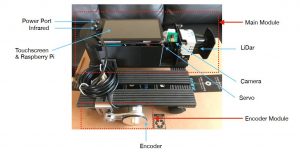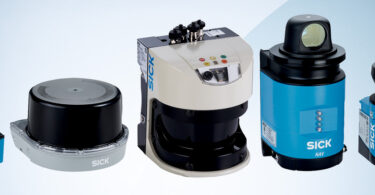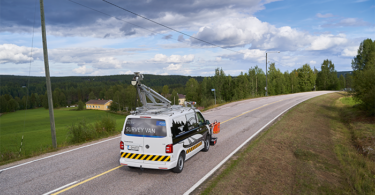During an online semester, a team made up of students from two different countries and universities finished SICK’s TiM$10K competition in third place
Tunnel and pipeline inspections are conducted frequently to ensure they are safe. Currently, these are conducted by humans during nighttime hours, but this can be a hazardous area to visit. Within the tunnels there is a lack of fresh air and light, lots of dust and a potential for an accident, like a collapse, to occur.
A team composed of students from the University of Wisconsin-Madison and Worcester Polytechnic Institute developed a solution. William Dong, Yicheng Si, and Xuyao Xia worked together to create a LiDAR Tunnel Inspection Automation System (LTIAS) that is accurate, easy to manage, and will ultimately reduce the amount of human labor needed in the tunnels.
For a third consecutive year, SICK put on the TiM$10K challenge for students across the country to participate in an innovative competition. Each year SICK provides teams of students with a 270° SICK LiDAR sensor (TiM) and encourages them to tackle a problem in any industry, and create a solution using the provided technology. Learn more about the background of the TiM$10K Challenge.
With the project taking place during a virtual semester for many college students, this meant limited access to workshops on campus. Another challenge this team was confronted with was the fact that one team member was in China, another in Madison, and one in Massachusetts. Finding a way to collaborate was crucial for their success, but they made it work.
“We used Microsoft Teams to host meetings and collaborate and we also had a weekly report stating what we’ve done, what still needs to be done and topics to discuss,” said incoming junior at the University of Wisconsin-Madison William Dong.
Dong said that the team initially wanted the sensor to be put on the front of a car to identify objects in front or back of the vehicle but realized it might be too expensive for customers. He stated that driving on a wide road would make identifying objects easier for the sensor because there is more space to differentiate between cars and buildings. But, on a narrow road the sensor could get buildings and vehicles mixed up because of their close proximity. It would be difficult for the team to overcome that challenge, so they shifted their idea using inspiration from last year’s Honorable Mention team.
“A group in a previous year inspected deformations on roads and I think that’s a great idea because the road is continuous, and you can always use your LiDAR. I think that really inspired us to find another track,” Dong said.
Two SICK sensors were used to execute the team’s vision, the first was the SICK TiM781 LiDAR sensor that was placed in front and used to scan through the geometric perpendicular toward the direction of motion. The second sensor, the SICK DVB 50E Encoder was used to measure distance.
“I really appreciate SICK’s help because we didn’t expect them to let us use another sensor but during a check-in we mentioned that we needed another sensor and they told us SICK is always willing to help us,” Dong said.
The adoption of LTIAS can reduce the amount of labor used for tunnel inspection, increase safety and cut costs needed for managing the tunnels.
This contest was supported by PMMI Foundation’s U Skills Fund. PMMI Foundation works to grow awareness of careers in packaging and processing, providing assistance to schools and programs that develop students to excel in the industry.






